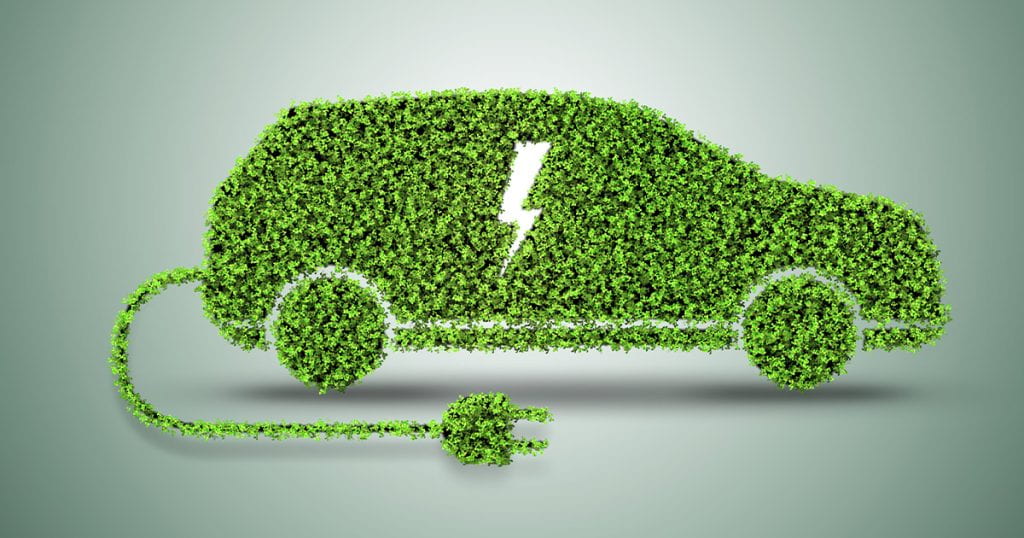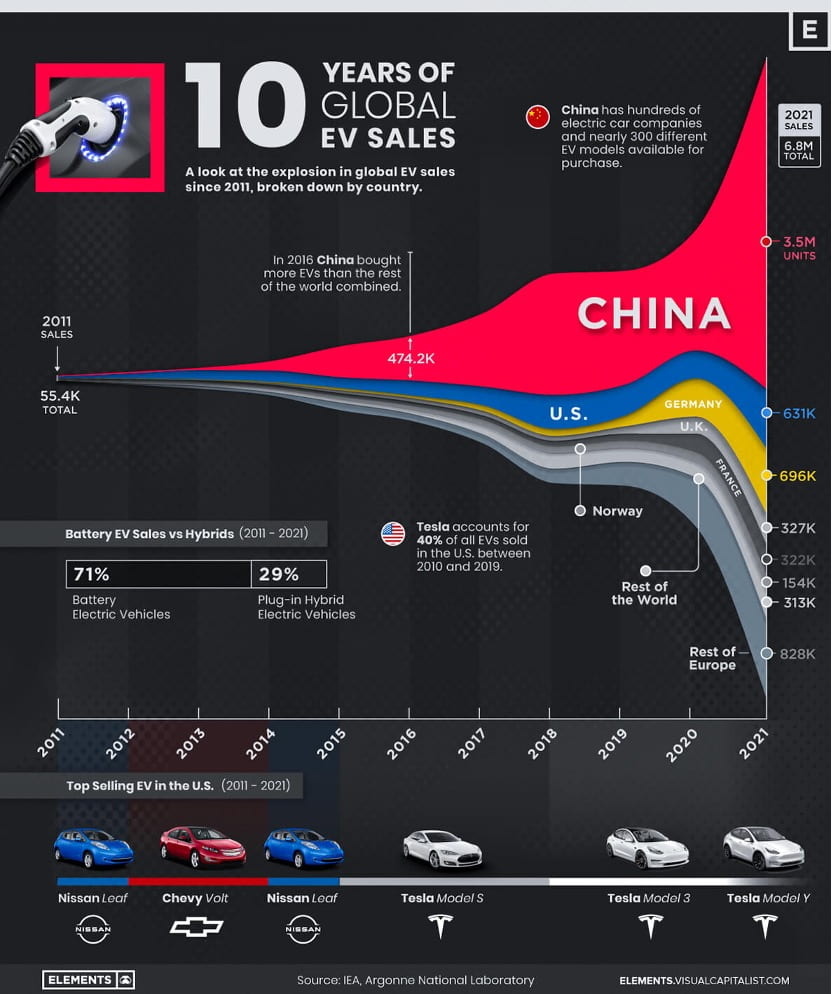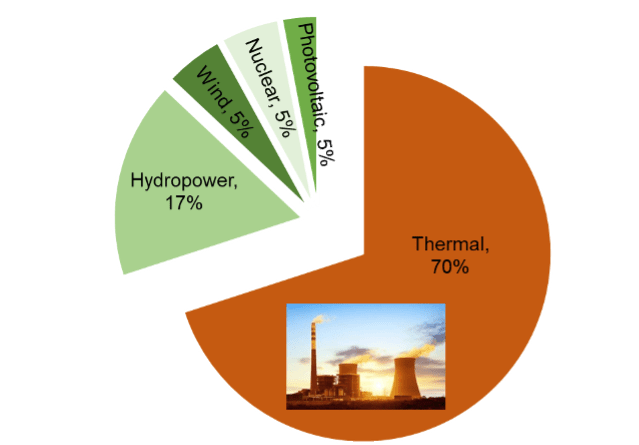Written by contributors from a variety of backgrounds and expertise, Global Perspectives is a series from the Habanero that reveals how people across the world are coping with and adapting to an increasingly extreme climate. In this post, we invited Dr. Boling Li of China to tell us about aspects of how China is addressing climate issues.
In 2016, China bought more electric vehicles (EVs) than the rest of the world combined. China has always been seeking solutions for clean transportation; with such a large population, any tiny reduction of pollution released from a single family’s activities is strongly additive to the total environmental protection. With the incentivizing policy from the Chinese government, EV sales keep growing fast in China, meteorically in the last two years.
EV sales in China, at a glance. Source: International Energy Association, Argonne National Laboratory
Why do we prefer EVs in China?
In addition to subsidies, local governments award license plates to EVs without restriction, while buying a new petrol-powered car in many cities (especially big cities like Beijing and Shanghai) requires purchasing a license plate via auction. Such a purchase often adds thousands of dollars to the price of the car. Calculating driving cost, compared to driving a petrol-powered car in China, EVs cost 1/10 less to drive since the price of electricity is much lower than petrol in China.
EVs are widely touted as being green in China as well as the United States.
Driving an EV seems a perfect solution for clean transportation in China since there are no combustion exhaust emissions as compared to petrol-powered cars. The lack of exhaust emissions is clean and environmentally friendly, but the way to produce electricity may not be at present.
Is electricity production really clean in China?
According to the power structure report from Chinapower in 2021, 70% of China’s electricity comes from thermal power, 17% comes from hydropower, with wind power and nuclear power each accounting for 5%, and photovoltaic only accounting for 3%.
An environmentally positive electricity mix?
China’s power structure is still dominated by thermal power generation, with coal as the main source of thermally generated electricity, while natural gas accounts for a small proportion. Wind power and photovoltaic power together account for over 24% of the installed capacity, but their combined power generation only accounts for approximately 9% of total electricity generation, making a relatively small overall contribution.
In addition, nuclear power contributes 5% of power generation, with 2% of installed capacity, and hydropower contributes 18% of power generation, with 17% of installed capacity. This electricity production structure determines the non-cleanliness of the electricity consumption structure and is also the biggest obstacle and key factor in achieving China’s “dual carbon” goal (achieving peak emissions by 2030 and carbon neutrality by 2060, according to chinapower.com.cn).
Hard-to-store electricity?
While electricity is enjoying the advantage of “no emission of pollution,” it is also suffering the disadvantage of non-cleanliness due to China’s current electricity production/consumption structure. What else? Compared to fossil fuel, electricity is very hard to store (see electricity – Why is electrical energy so difficult to store? – Physics Stack Exchange), which causes large amounts of energy waste as the amount of electricity used in the daytime is usually much higher than what is used at midnight, but the thermal power plant is running 24 hours. In order to encourage energy savings, electricity is now charged differently during different consumption periods and consumption hours in China.
Example of electricity consumption hours; data for Shanghai are shown.
| Peak Hours | 8:00–15:00; 18:00–21:00 |
| Normal | 6:00–8:00; 15:00–18:00; 21:00–22:00 |
| Off-Peak Hours | 22:00–6:00 |
Peak electricity use periods include summer (July, August, September) and winter (January, December). During these periods, the electricity price increases by 80% overall (i.e., over “Normal”), with a peak hour price increase of an additional 25%, while the off-peak price is discounted by 60%.
In the other months (non-peak periods), the peak hour electricity price will increase by 60% over the Normal hours price, while the off-peak hour price is discounted by 50%.
Any other ways to solve the difficulty of power storage so we can save energy?
3.5 million units for electric storage!
Though driving an EV is emissions-clean, how electricity is produced is 70% “non-clean” according to the electricity consumption structure in current China, with additional substantial environmental problems of additional battery waste produced from EVs, making the EV seem an imperfect solution for clean transportation. Since the electricity charge is much cheaper at midnight, and we do not normally drive at midnight, people in China charge their EVs more often at midnight. Is this a new perspective on energy savings and an environmentally friendly facet of EVs? If we regard the EV from every family that owns one as an extra electricity storage unit, this contributes an additional 3.5 million units in the year 2021 from the EV sales data above.
With the development of a better (environmentally friendly) electricity mix in China’s near future, I see the light of clean transportation and electricity storage solution by EV!

Dr. Boling Li is a lecturer at the department of Environmental Science and Engineering at the Suzhou University of Science and Technology. His recent interests are heavy metal speciation, biotic ligand modeling, heavy metals as nutrients or as toxicants for microorganisms in freshwater; environmental pollution by harmful algal blooms and cyanobacterial toxins, and how speciation and therefore harmful blooms are affected by climate change.



